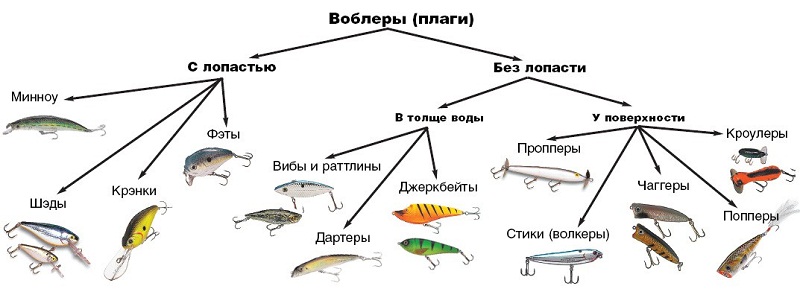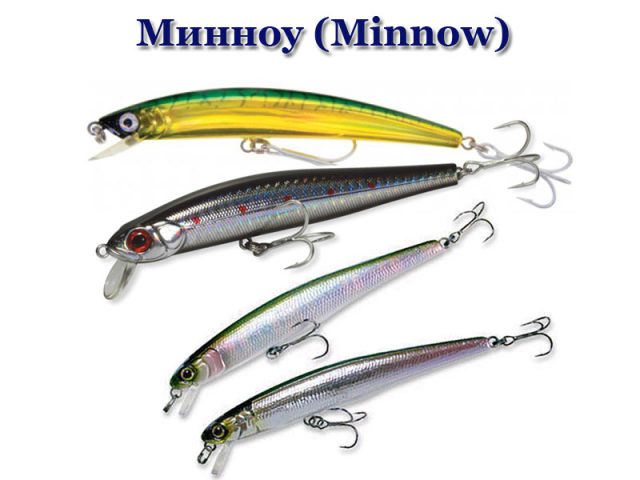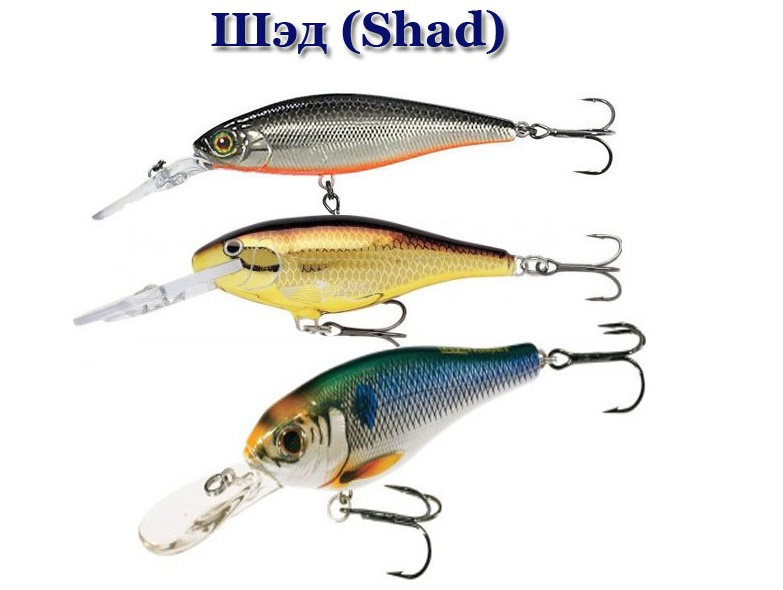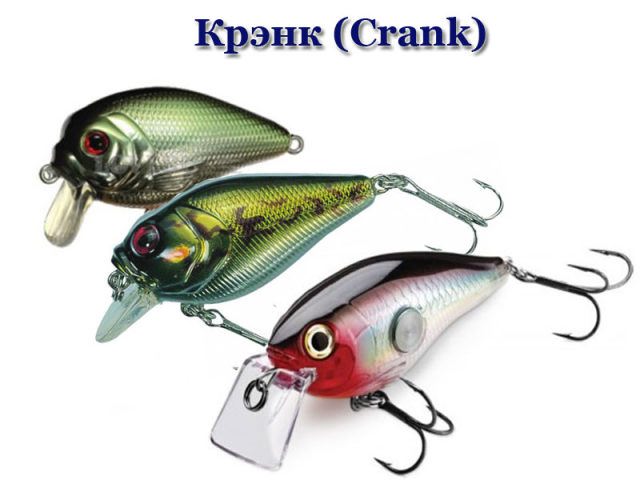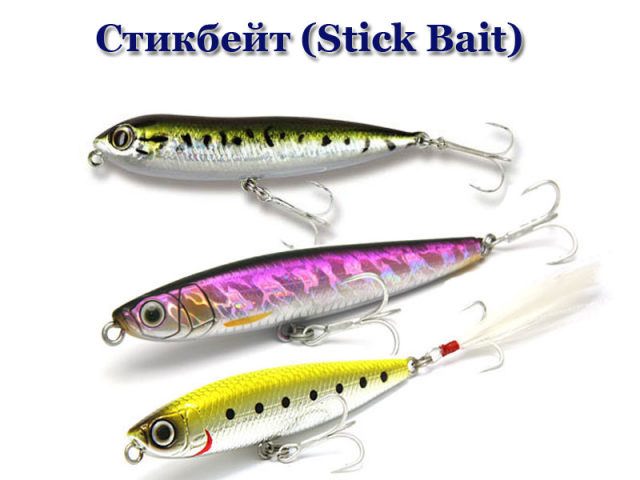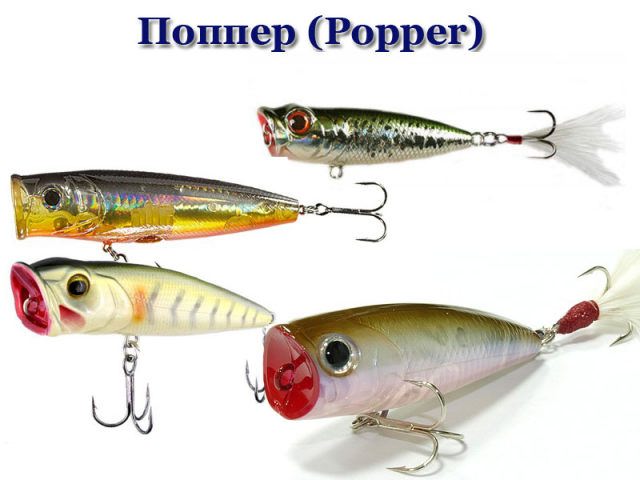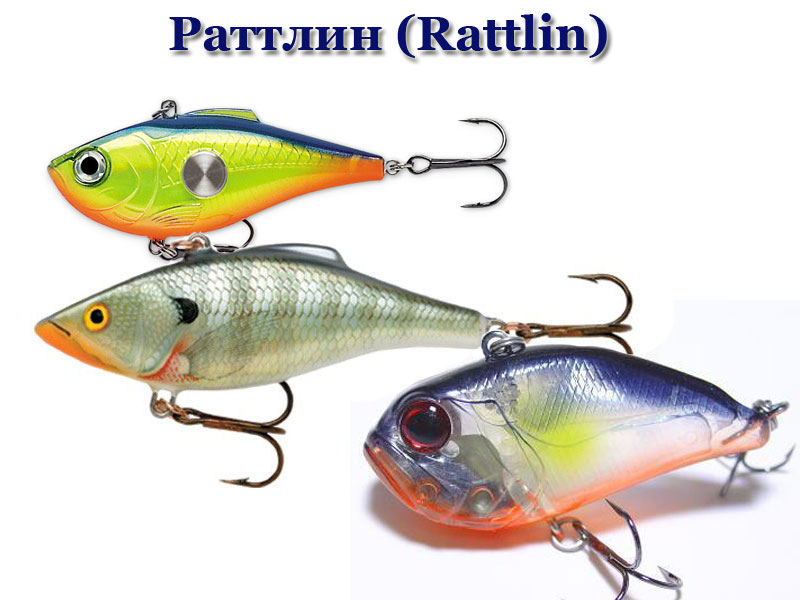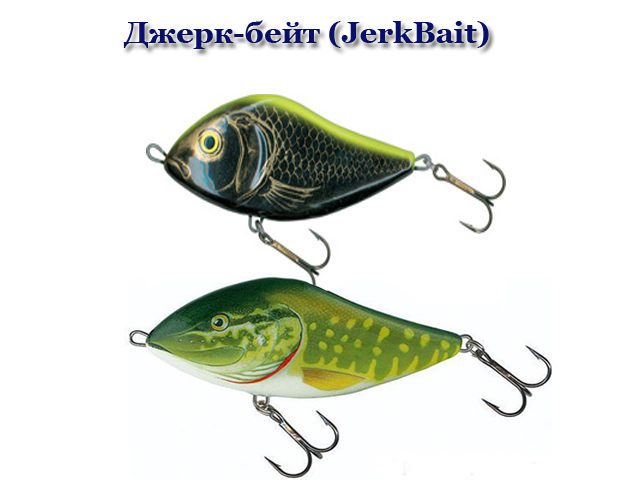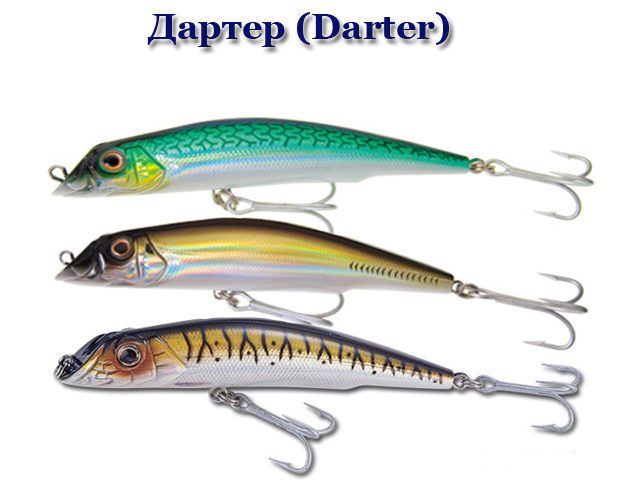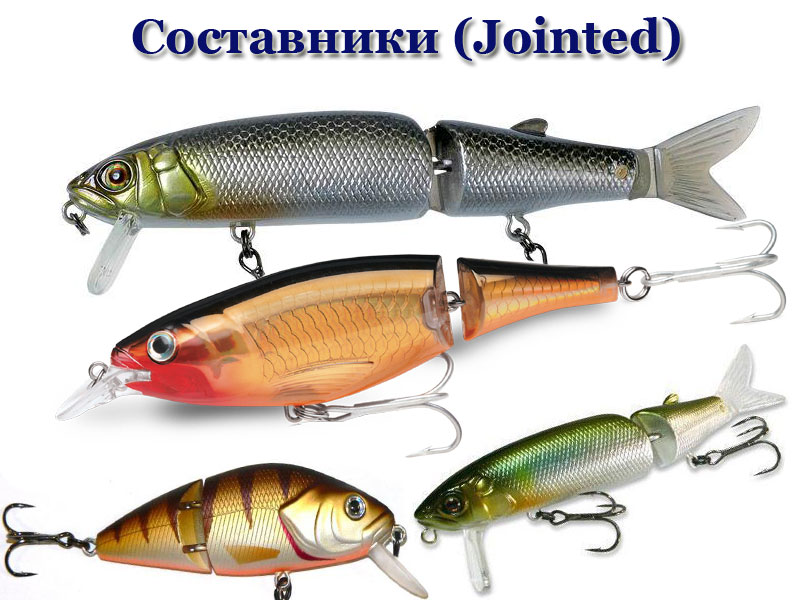Sections of the site
Editor's Choice:
- What to feed a hedgehog at home?
- How to make a poster with chocolates and inscriptions with your own hands?
- Do-it-yourself hazel onion
- What do you need for a picnic
- Pike head ear
- Rating of winter spinners for perch
- How to salt pike caviar
- How to make cheese at home - recipe
- How to care for a hedgehog at home
- How to make a hunting bow with your own hands?
Advertising
| Wobblers: types, classification, design features and use of artificial lures |
|
Wobblers can be used in almost any fishing conditions. Different types of wobblers allow you to catch almost any body of water - you can easily choose the model that is most suitable for specific fishing conditions. For shallow water, areas overgrown with aquatic vegetation, one model is chosen, for deep holes, as well as others. Different manufacturers make different products that the angler can choose based on fishing conditions, personal preferences, and the amount that he is willing to spend on artificial lures. The main parameters of wobblers are considered to be the shape of the body, weight, dimensions of the blade (which means the depth of penetration), buoyancy, and color. Based on these parameters, they usually select a bait for fishing in specific conditions, which ensures the stable popularity of wobblers among spinningists fishing both from the shore and from swimming facilities. The history of the wobbler as a fishing bait began in the United States. Beekeeper D. Haddon once observed how a local perch (bass) grabs wood shavings floating on the surface of a reservoir, having drawn the appropriate conclusions, the inventor of the bait began experiments with wooden imitations of fish. Such baits were in good demand among American anglers, and a couple of decades later Haddon's company was already producing transparent plastic wobblers - improved versions of the first wooden models. However, many anglers consider the inventor of the wobbler in the modern sense of this lure not Haddon, but a Finnish fisherman named Lauri Rapala, the founder of the Rapala company, which is still famous for its artificial lures. It was Rapala who first installed a paddle, which not only provided the wobblers with the opportunity to go deep to the required wiring horizon, but also significantly improved their game. Modern types of wobblers are mostly derived from the lure first made by Lauri. Production materialWobblers are made from different types of polymeric materials, polystyrene, different types of wood. However, most modern models are made of plastic, since the production of such wobblers is not only more manufacturable, but the baits themselves are more reliable and durable. The foam itself is quickly disabled, the tree is also short-lived - the teeth of predators damage the varnish coating, water gets inside and gradually destroys the bait (when the body is wet from the inside, it dries out, it simply cracks). body shapeOne of the most important parameters that affect the characteristics of fishing with a particular lure is the shape of the body. This indicator directly affects the features of the game. Types of wobblers with a blade, based on the shape of the body:
Types of wobblers without blades:
Surface varieties of wobblers:
Separately, you can also select composite models, as well as swimbaits.
Photo 1. Classification of wobblers. In the classification of wobblers, the type of wobbler of the minnow type is perhaps the most commonly used. This body shape is largely reminiscent of such a type of fish as bleak or topfish - the body is either cigar-shaped or somewhat convex upwards. The length significantly exceeds the height, while most models have a relatively small blade.
Photo 2. Minnow. Most minnows do not have a pronounced game of their own, the spinning player must set the game himself. Also, the minnow form is considered the most preferable for fishing on reservoirs that are too popular with anglers. The use of minnow-type wobblers is effective throughout the open water season, although it is believed that for cold water and, accordingly, less active fish, options with neutral buoyancy are more suitable, for summer - sinking or floating, which allow for more dynamic wiring. FatThese are quite voluminous baits with an almost teardrop-shaped body. The penetration of wobblers of this type is usually small, since such a body shape already has significant drag, which loads the tackle quite heavily. Fats rarely dive deeper than one and a half meters. Due to this body shape, the fat has a rather interesting and stable game, including at low speeds. Such a wobbler can be considered as friendly to beginners as possible - there are no special wiring tricks as such, and even cheap unnamed Chinese products have quite a tolerable game. There is indeed a downside. Due to the short body, the tees are quite often interlocked together. Important! The problem of interlocking hooks can be prevented either by using smaller tees or by replacing the winding rings with smaller ones. If this step does not solve the problem, you can completely remove the front tee.
Photo 3. Fat. ShadIt is also a very popular form. Of the natural inhabitants of the reservoirs of the middle zone, the body shape of the shad most of all resembles roach, rudd. Wobblers of this type are often used by beginners, since it is novice spinning players who often try to pick up a bait that is as similar as possible to the natural prey of a predator (more experienced anglers also use such baits, but at the same time they often use wobblers that are more unusual for fish in our reservoirs forms). Compared to minnows, the body of shads is significantly higher, but compared to fats, the body of a shad is less voluminous. Possessing somewhat less resistance than fats, a shad-type wobbler often works at much greater depths.
Photo 4. Shad. CrankThese wobblers are intermediate in shape between fats and shads. Therefore, sometimes it is difficult to attribute a particular model to a particular class. Wobblers with this body shape are characterized by a good casting distance, as well as a roll game, which is believed to remind the predator of the behavior of a wounded fish, which provokes even well-fed and passive predatory fish to attack. This bait is also well suited for beginners, since it does not require any complex wiring to work effectively - the crank will do its job on a uniform one. According to the depths of penetration, cranks are most often produced with the possibility of wiring at a depth of one and a half to two meters.
Photo 5. Crank. Stickbait and walkerThe stickbait is very similar to the walker, often these terms refer to the same bait, but many still believe that these are slightly different baits. The classic walker, when wired, goes exclusively on the surface of the water, while the stickbait goes, although close to the surface, but it is still completely submerged under water, to a depth of 5 cm. The wires use the same ones - the so-called “walking-the-dog”. Stickbaits and walkers usually have a fairly large mass, and due to the lack of a blade, they have good aerodynamics, as a result of which long-range casts are possible, which is important when fishing.
Photo 6. Stickbait. popperThis wobbler floating on the surface of the water also does not have a blade. Its attractiveness to fish is due to the presence of a bowl-shaped recess in the bow, which, when properly wired, makes gurgling sounds and raises a lot of spray. Such features of the work of poppers attract predatory fish from a long distance. They are especially effective in warm water.
Photo 7. Popper. CrawlerThe crawler, unlike other wobblers, has a blade installed across the longitudinal axis of the body, and not along. This design gives the original waddling game, which of the inhabitants of the reservoirs of the middle zone most attracts pike.
Photo 8. Crawler. rattlinThe body of the rattlin is flat, it does not have a blade. It has its own game on a uniform line, and is also equipped with a capsule with noise elements. The ring for attaching to a fishing line or a leash at a rattlin, unlike other wobblers, is located not in the bow, but on the back.
Photo 9. Rattlin. JerkbaitA flat lure without a blade, used for various jerky hauling options. For the most part, these are heavy and large wobblers, which places high demands on gear - you need a powerful multiplier reel and the same powerful jerk rod.
Photo 10. Jerkbait. The shape is more similar to the usual wobblers than other baits without blades. Instead of a shoulder blade, the darter has a beveled nose, which provides a kind of chaotic game. Often used for sea fishing.
Photo 11. Darter. Compiled and swimbaitsBoth compound and swimbaits have a body consisting of several movably connected sections (at the same time, swimbaits are made of softer material, and compound wobblers are made of harder plastic). Such baits have a very lively action, however, as a rule, they are significantly more expensive than other models.
Photo 12. Compiled. BuoyancyThe classification of wobblers by buoyancy takes into account the behavior of the bait when the wiring stops. There are three main options in total:
Differences in buoyancy allow you to choose the right wobbler for any reservoir and fishing season. Also, do not forget that the leash can also affect buoyancy - heavy, thick metal leashes often turn suspenders into sinking ones. Important! You can make the wobbler float more slowly, or even turn the suspender into a sinking one, with a simple trick. It is enough just to solder a lead shot of the appropriate mass to the forearm of the hook. Blade color and shapeThe depth of work can be distinguished:
This parameter depends on the mass, buoyancy, and to a large extent on the shape, length and angle of attachment of the blade. The blade largely affects the working depth of the bait, the longer the blade, and the sharper the angle it departs from the body, the deeper such a bait can be considered. It should also be borne in mind that the speed of winding up the fishing line to a large extent also affects the depth - the faster the angler rotates the handle, the deeper the bait sinks. Plays a role and colors. In total, there are two main color options:
Natural colors correspond to the color of a peaceful, less often predatory, fish - silver or yellowish, there are also color options that repeat the pattern on the scales of a pike or perch. The use of natural-colored wobblers is mainly recommended in clear water and in good light. Provocative color options mean that the bait is painted with bright, saturated, unnatural colors, which well attracts the attention of a predator in muddy waters or in poor lighting conditions. |
| Read: |
|---|
New
- How to make a poster with chocolates and inscriptions with your own hands?
- Do-it-yourself hazel onion
- What do you need for a picnic
- Pike head ear
- Rating of winter spinners for perch
- How to salt pike caviar
- How to make cheese at home - recipe
- How to care for a hedgehog at home
- How to make a hunting bow with your own hands?
- How to catch a wobbler

